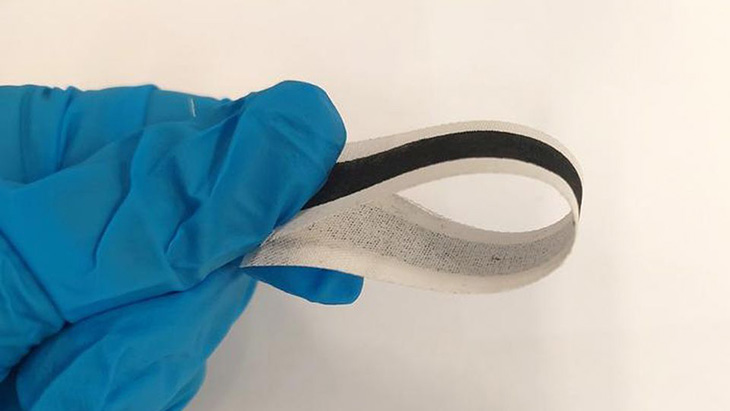

A Step Toward Sustainable Wearable Electronics
Wearable electronic textiles, or e-textiles, are emerging as a promising solution in the intersection of technology and sustainability. A groundbreaking study led by researchers from the University of Southampton and UWE Bristol in the UK has demonstrated that e-textiles can be both sustainable and biodegradable. This innovative research introduces a new approach called SWEET, which stands for Smart, Wearable, and Eco-friendly Electronic Textiles. Their findings, published in the journal Energy and Environmental Materials, provide valuable insights into the potential of e-textiles to balance functionality with environmental responsibility.
The Growing Demand for Sustainable E-Textiles
E-textiles incorporate embedded electrical components such as sensors, batteries, or lights and are used in applications ranging from fashion and sportswear to medical devices that monitor vital signs. As the demand for wearable technology grows, so does the concern about the environmental impact of such textiles when they reach the end of their lifecycle. Conventional e-textiles often contain non-biodegradable metals, such as silver, which complicates recycling and contributes to waste.
“Integrating electrical components into conventional textiles complicates the recycling of the material because it often contains metals, such as silver, that don’t easily biodegrade,” explained Professor Nazmul Karim of the University of Southampton. The SWEET project aims to overcome these challenges by utilizing sustainable materials and innovative manufacturing processes, ensuring that the fabrics decompose efficiently once disposed of.
Innovations in Sustainable Materials
The SWEET design consists of three layers: a sensing layer, a layer interfacing with the sensors, and a base fabric. The researchers selected Tencel, a biodegradable fabric made from renewable wood, as the base material. Tencel’s eco-friendly properties make it an ideal foundation for e-textiles. The active electronics in the SWEET fabric are crafted from graphene and a polymer called PEDOT: PSS. Both materials are conductive and are applied to the fabric through a precision inkjet printing process.
This method significantly reduces waste, as only the exact amount of functional materials is deposited. Moreover, the process consumes less water and energy compared to traditional screen printing. “The inkjet printing process is a more sustainable approach for e-textile fabrications,” emphasized Marzia Dulal from UWE Bristol, the study’s first author. “It deposits exact numbers of functional materials on textiles as needed, with almost no material waste.”
Functionality Meets Sustainability
The SWEET fabric underwent rigorous testing to validate its performance. Researchers evaluated its capability to continuously monitor heart rates and temperature using industry-standard methods. Five volunteers wore gloves equipped with the e-textile sensors, and the results confirmed reliable and effective monitoring.
“Achieving reliable, industry-standard monitoring with eco-friendly materials is a significant milestone,” said Dr. Shaila Afroj, Associate Professor of Sustainable Materials at the University of Exeter and co-author of the study. “It demonstrates that sustainability doesn’t have to come at the cost of functionality, especially in critical applications like healthcare.”
Biodegradability and Environmental Impact
To assess the biodegradability of the SWEET fabric, the researchers buried it in soil for four months. During this period, the material lost 48% of its weight and 98% of its strength, showcasing its capacity for relatively rapid decomposition. Additionally, a life cycle assessment revealed that the graphene-based electrodes had up to 40 times less environmental impact than conventional electrodes.
“Our life cycle analysis shows that graphene-based e-textiles have a fraction of the environmental footprint compared to traditional electronics,” noted Dulal. “This makes them a more responsible choice for industries looking to reduce their ecological impact.”

Future Applications and Vision
The success of the SWEET project highlights the potential of e-textiles to revolutionize various industries. Beyond their applications in healthcare, these materials could be integrated into performance sportswear, fashion, and even early disease detection systems.
Professor Karim expressed optimism about the future of SWEET, emphasizing its broader implications. “These materials will become increasingly more important in our lives,” he concluded. “Our next steps involve designing wearable garments made from SWEET, particularly for early detection and prevention of heart diseases.”
The Road Ahead
The development of SWEET marks a significant advancement in sustainable technology. By combining eco-friendly materials, innovative manufacturing processes, and reliable functionality, researchers have created a blueprint for future e-textiles. As industries increasingly prioritize sustainability, the findings from this study serve as a testament to the potential of responsible innovation to address pressing environmental challenges while enhancing quality of life.
What are your thoughts? Please comment below and share this news!
True Activist / Report a typo







